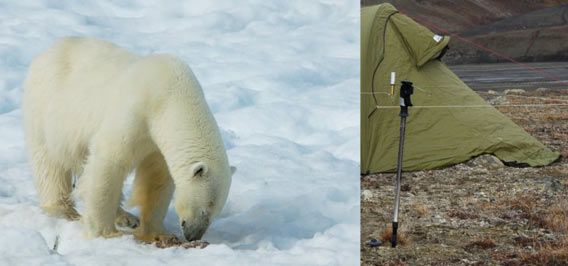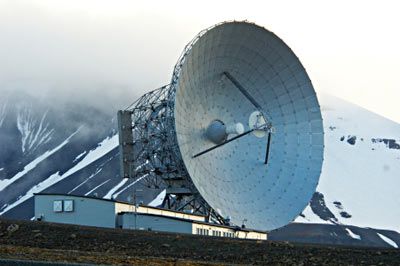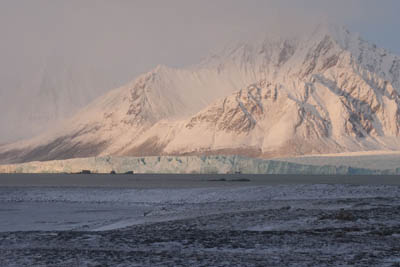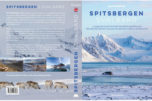-
current
recommendations- Liefdefjord
New page dedicated to one of Spitsbergen's most beautiful fjords. Background information and many photos.
- New Spitsbergen guidebook
The new edition of my Spitsbergen guidebook is out and available now!
- Liefdefjord
New page dedicated to one of Spitsbergen's most beautiful fjords. Background information and many photos.
Page Structure
-
Spitsbergen-News
- Select Month
- June 2025
- May 2025
- April 2025
- March 2025
- February 2025
- January 2025
- December 2024
- November 2024
- October 2024
- September 2024
- August 2024
- July 2024
- June 2024
- May 2024
- April 2024
- March 2024
- February 2024
- January 2024
- December 2023
- November 2023
- October 2023
- September 2023
- August 2023
- July 2023
- June 2023
- May 2023
- April 2023
- March 2023
- February 2023
- January 2023
- December 2022
- November 2022
- October 2022
- September 2022
- August 2022
- July 2022
- June 2022
- May 2022
- April 2022
- March 2022
- February 2022
- January 2022
- December 2021
- November 2021
- October 2021
- September 2021
- August 2021
- July 2021
- June 2021
- May 2021
- April 2021
- March 2021
- February 2021
- January 2021
- December 2020
- November 2020
- October 2020
- September 2020
- August 2020
- July 2020
- June 2020
- May 2020
- April 2020
- March 2020
- February 2020
- January 2020
- December 2019
- November 2019
- October 2019
- September 2019
- August 2019
- July 2019
- June 2019
- May 2019
- April 2019
- March 2019
- February 2019
- January 2019
- December 2018
- November 2018
- October 2018
- September 2018
- August 2018
- July 2018
- June 2018
- May 2018
- April 2018
- March 2018
- February 2018
- January 2018
- December 2017
- November 2017
- October 2017
- September 2017
- August 2017
- July 2017
- June 2017
- May 2017
- April 2017
- March 2017
- February 2017
- January 2017
- December 2016
- November 2016
- October 2016
- September 2016
- August 2016
- July 2016
- June 2016
- May 2016
- April 2016
- March 2016
- February 2016
- January 2016
- December 2015
- November 2015
- October 2015
- September 2015
- August 2015
- July 2015
- June 2015
- May 2015
- April 2015
- March 2015
- February 2015
- January 2015
- December 2014
- November 2014
- October 2014
- September 2014
- August 2014
- July 2014
- June 2014
- May 2014
- April 2014
- March 2014
- February 2014
- January 2014
- December 2013
- November 2013
- October 2013
- September 2013
- August 2013
- July 2013
- June 2013
- May 2013
- April 2013
- March 2013
- February 2013
- January 2013
- December 2012
- November 2012
- October 2012
- September 2012
- August 2012
- July 2012
- June 2012
- May 2012
- April 2012
- March 2012
- February 2012
- January 2012
- December 2011
- November 2011
- October 2011
- September 2011
- August 2011
- May 2011
- April 2011
- March 2011
- February 2011
- January 2011
- December 2010
- November 2010
- September 2010
- August 2010
- July 2010
- June 2010
- May 2010
- April 2010
- March 2010
- February 2010
- November 2009
- October 2009
- August 2009
- July 2009
- June 2009
- May 2009
- April 2009
- March 2009
- February 2009
- January 2009
- December 2008
- November 2008
- October 2008
- August 2008
- July 2008
- June 2008
- May 2008
- April 2008
- March 2008
- February 2008
- April 2000
- Select Month
-
weather information
-
Newsletter

| Guidebook: Spitsbergen-Svalbard |
Home
→ July, 2010
Monthly Archives: July 2010 − News & Stories
Two paddlers and an bear
Two young Norwegians had set out to circumnavigate the whole archipelago of Spitsbergen, including Nordaustland, in their sea kayaks, but their journey came to a very sudden end on the north coast of Nordaustland, when they were taken by surprise by an aggressive polar bear in their tent during the night. The trip wire, which had been set up correctly, was not triggered when the bear entered the camp and dragged one of the two young men out of his sleeping bag and away from the camp. The second paddler managed to shoot the bear soon. Both men were soon brought to hospital with the governor’s helicopter. The injuries of the one who was pulled out of the tent by the bear were not serious and he recovered quickly, as expected.
It is still unknown why the trip wire had failed when the bear walked through. Two pins were pulled out of the mechanism, as they are supposed to, but the alarm mines did not explode. A few days earlier, some wind had been enough to trigger the alarm.

During summer, when the sea ice is retreating from the coast, access to seals, their main prey, is more difficult for polar bears. If they remain on shore, they will try to find carrion, bird eggs or anything else that is digestable, which can make hungry bears dangerous also for man. In Spitsbergen, it is common (and required) to protect camps with trip wire during the night. Alternatively, dogs can serve the same purpose.
Source: Svalbardposten and Sysselmannen
New geodetic station planned in Ny Ålesund
The Norwegian mapping authority wants to establish a new geodetic station at Brandalspynten near Ny Ålesund. Both the Norwegian Polar Institute and NERC (Natural Environment Research Council, Großbritannien) are against the plan in its current shape. They agree that existing infrastructure should be used for the purpose, rathern than building new bridges and roads. NERC fears that other projects might follow in case authorities open for establishing new buildings and infrastructure outside Ny Ålesund. Until now, the area around Brandalspynten is untouched wilderness.
Source: Svalbardposten
Underground CO2 storage in Adventdalen
Researches are currently working to establish the reservoir capacity of sandstone layers in Adventdalen for carbon dioxide. The equipment used for previous tests has not been strong enough to explore the full potential. Testing is done by pumping water into the layers 970 metres under the surface, starting with a rate of 10 liters/minute and increasing gradually to 500 liters/minute. The results will help to evaluate the question if the layers in question are suitable to store large amounts of carbon dioxide safely. If so, carbon dioxide will be pressed down in liquid state, thus water as testing substance. A 400 meter thick permafrost layer is supposed to keep the liquid gas inside. If testing works according to plan, UNIS scientists plan to continue with further test drillings in 2011.
Adventdalen in summer 2010: the street from Longyearbyen to mine 7 is passing the old northern light observatory and the blue, chimney-like building were test drilling for the CO2 storage site is carried out.
Source: Svalbardposten
Will Bear Island get its own cenotaph?
The fishery support vessel »Petrozavodsk«, that ran aground on Bear Island in May 2009, will until further remain in its position on the southeastern coast of the island. Authorities have not yet decided how to deal with the wreck. Several options have been discussed, amongst them leaving it where it is, sinking it in deeper waters or cutting it up and removing it. All of these options have in common that they have environmental effects and are expensive. Meanwhile, the vessel has broken up into two parts, which are still on the rocks directly under several hundred meters high, near-vertical cliffs, which makes all operations difficult and dangerous. Oil, fuel and other dangerous liquids and goods were removed soon after the wreckage; it cannot be excluded that further dangerous substances have remained on board.
Source: Svalbardposten
Third EISCAT-antenna
The installations of EISCAT (European Incoherent Scatter) near mine 7 will be enlarged with a third antenna, which will be the biggest one. The project is mainly financed from China, that is interested in the data because of planned space operations. The additional antenna may be operative in 2013.
EISCAT-antenna 2008: one out of four similar installations in Scandinavia. The system is run by 7 nations.
Source: Svalbardposten
Polar Star aground
On June 30, MV Polar Star ran aground on a rock north of Hornsund (south of Dunøyane). The surprising aspect is the fact that the shallow is actually marked on the most recent sea charts, but as it turned out, older versions were used on board, which do not include the rock. There were no injuries or losses and damage to the hull was not significant. The governor’s vessel and the coast guard were soon in the area to evaluate the situation and assist, if necessary. The 67 passengers of MV Polar Star were soon transferred to MV Fram, another cruise ship that was in the area. MV Polar Star could continue its regular service already July 03.
MV Polar Star has been used as cruise ship in Spitsbergen waters for a number of years and has frequently visited the area in question before.
Dunøyane north of Hornsund, where MV Polar Star ran aground on June 30. The coast of the main island in the background.
Sourcen: Sysselmannen, Svalbardposten und Miljøstatus på Svalbard
News-Listing live generated at 2025/June/15 at 07:11:18 Uhr (GMT+1)
































